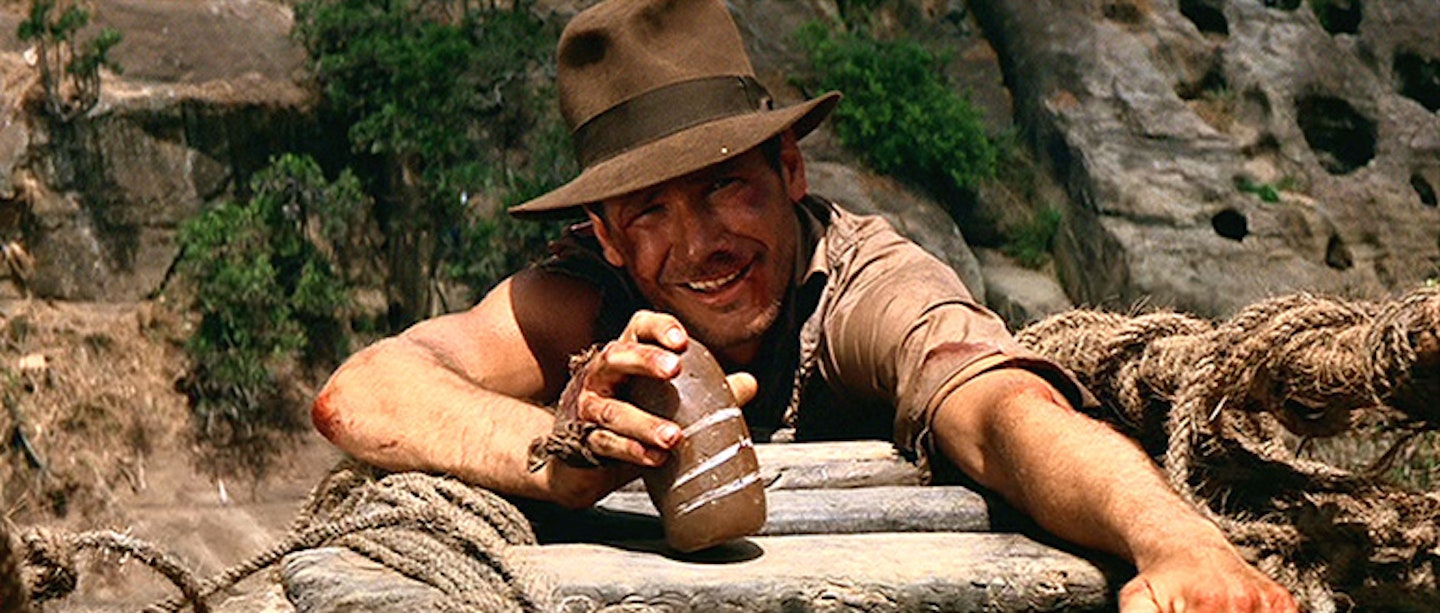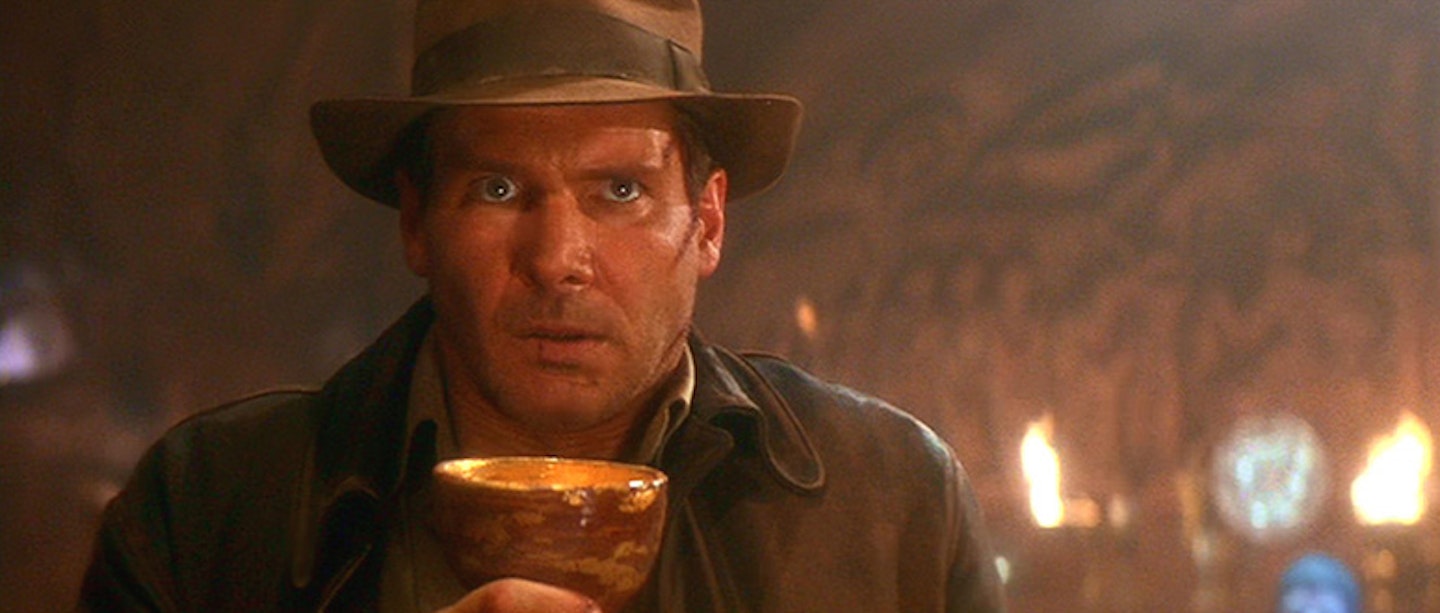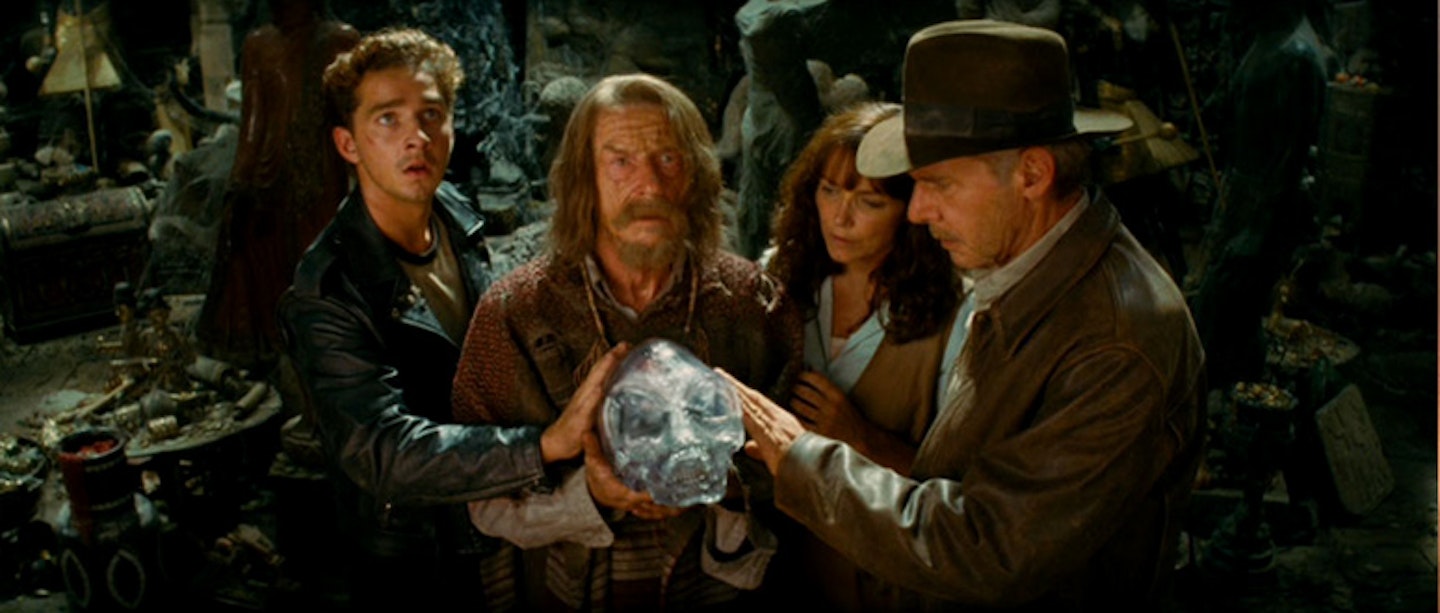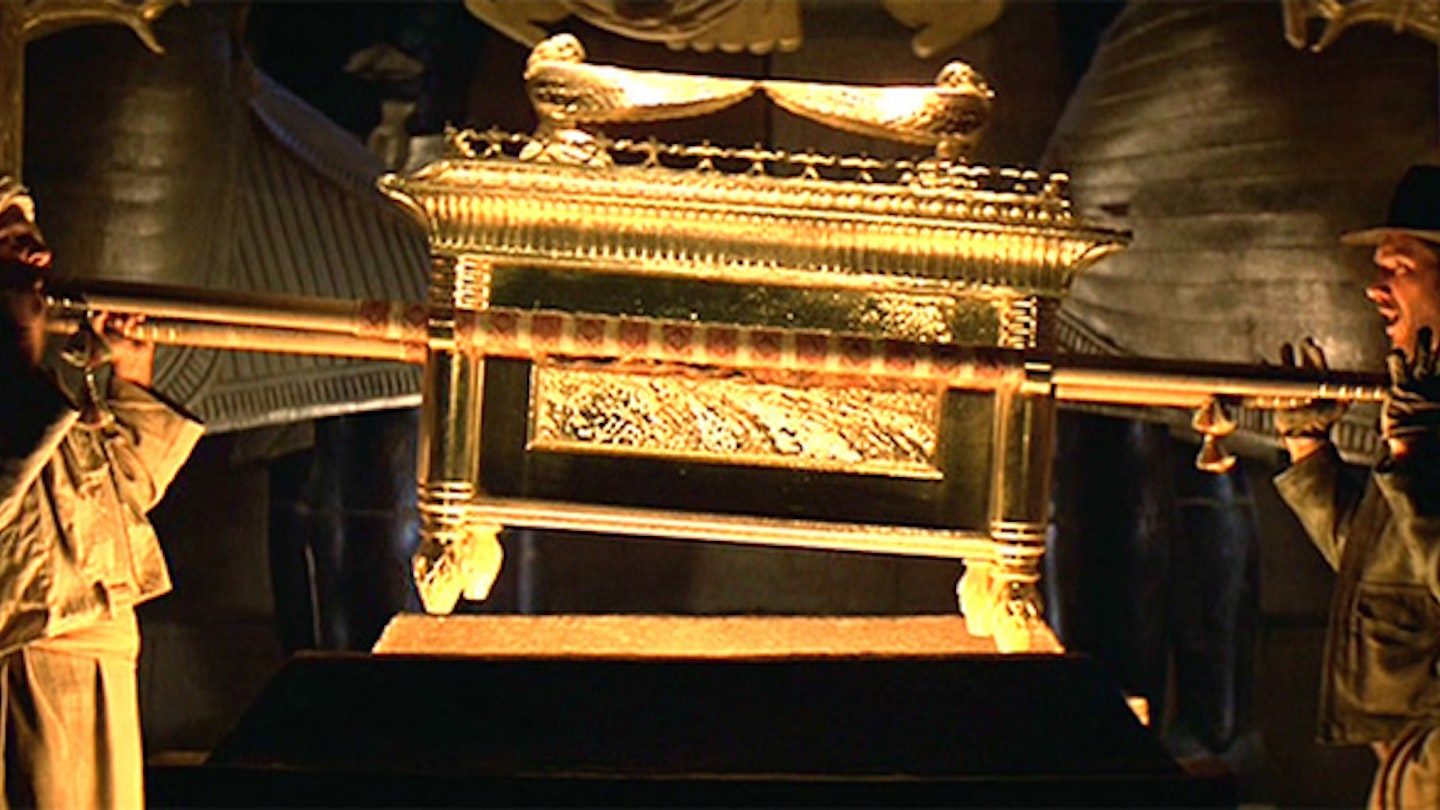As seen in: Raiders Of The Lost Ark
The Power: The Ark Of The Covenant is described in the Bible as the sacred container in which The Ten Commandments rested - "and thou shalt put into the Ark the testament I give thee" (Exodus 25:16). The source of God's presence on Earth, it also acts as a kind of divine flamethrower. According to Raiders' Marcus Brody, "an army that carries the Ark before it is invincible."
The Real Life Version: The holiest object in the Bible, the Ark is believed to be a gold plated wooden box, (4ft x 2ft by 2,5ft) and, because it is too holy to be put on the ground, or touched by any one but the chosen, it is carried on poles inserted into rings, famously circling the walls of Jericho behind the trumpets to begin the walls tumbling down.
Raiders has the Well Of Souls, the snake filled chamber that is the resting place of the Ark, in Tanis, Egypt but the real well of souls is actually the name of a natural cave beneath the Dome Of The Rock on the Temple Mount in Jerusalem. Certain legends suggest the Ark was hidden there but removed when the Neo Babylonians destroyed Solomon's temple. Guesses for the current whereabouts of the Ark include Ethopia, Zimbabwe, the Middle East and even dear old Blighty - historical boffin Graham Phillips suggests the Ark was taken to Mt Sinai by the Maccabbees (the Jewish liberation group, not the indie band) where it was gathered up by Ralph de Sudeley, leader of the Templars, and taken to his estate in Warwickshire.
The Movie Version: It wasn't George Lucas who came up with the idea of Indy chasing the Ark. The notion came from fellow San Franciscan filmmaker Phillip Kaufman who was told the story of the Ark Of The Covenant as a child by his dentist. There are also elements of truth in the Nazis interest in archaeological artefacts. Hitler was obsessed with finding religious icons to legitimize himself as a Messiah type figure and there are numerous stories of Nazis hunting down treasures in all corners of the globe.
Effectiveness as a McGuffin: 5/5 The perfect movie Macguffin. Rooted in credible folklore (but not hamstrung by it) and full of mystery, wonder and danger.

As seen in: Indiana Jones And The Temple Of Doom
The Power: There are five Sankara Stones. One has been stolen from a small village, where it provided crops and life for the people. Two stones were found beneath Pangkot Palace, with Mola Ram put slave children to work, digging for the other two. Once he has all five, he believes he will have the power to conquer all religions and deliver world dominance for the Godess Kali. Or something.
The Real Life Version: The Sankara Stones are based on the sivalinga, the symbol of the Hindu God Shiva. According to Hindu lore, Sankara was a priest who ascended Mount Kalisa where he met Shiva. Shiva passed on five stones invested with magical properties that Sankara could use to combat evil.
"Shiva lingas" are sacred symbols of Shiva. Originally the cylindrical shape represented the formlessness of creation, then gradually became associated with Shiva. All Shiva temples have sivalinga as the main diety. They can be found in temples and shrines throughout India. There are several types: The Anadi, or Svaymbhu, are considered the most sacred, and originate from heaven itself, falling from the sky. The Jangam are miniature symbols, often cast in stone, clay, metal or other material. They are small enough to be worn as amulets or necklaces, and are often thought of as "movable" lingas.
The Movie Version: Although Lucas came up with the Sankara Stones as a MacGuffin, screenwriters Willard Huyck and Gloria Katz had a long standing interest in Indian mythology and added colour and detail to the plot device. The Sankara Stone itself was built by effects designer George Gibbs and was simply a plastic casing with a lightbulb inside that illuminated to reveal its power.
***Effectiveness as a McGuffin: ***3/5. Lucas now feels the Sankara stones were "too esoteric" as a MacGuffin - indeed if you know exactly how they play into saving kidnapped children from an Indian death cult, answers on a post card please...

As seen in: Indiana Jones And The Last Crusade
The Power: The Holy Grail is the cup, goblet or plate used by Jesus at the Last Supper. It is said to be imbued with all sorts of miraculous powers and, in fiction, the hero must prove and battle to be worthy in its presence.
The Real Life Version: The development and history of the Grail legend is a complex one, some experts arguing that it derived from Celtic myth while others believe it is a purely Christian symbol. While the Grail first came to prominence in a poem by Chretien de Troyes, it is Robert de Boron's verse romance Joseph d'Arimathie that introduced the idea of a Holy Grail with Joseph acquiring the chalice to collect Christ's blood upon the cross - Joseph later founded a line of guardians in Britain to keep it safe. The search for the grail also plays an important part in Arthurian legend, most famously revolving around the knight Sir Galahad. Conceptions of it vary, some texts describing variously as a bowl, a cup or a platter. It has even been described as a stone that fell from heaven.
Ownership of the Grail has been assigned to various groups, most famously the Knights Templar in the 12th and 13th Century. Differing sources ascribe the whereabouts of the Grail to different Churches, mostly in Spain.
The Movie Version: "The Holy Grail was sort of feeble," says Lucas. "But, at the same time, we put the father in there to cover for it. I mean, the whole reason it became a dad movie was because I was scared to hell that there wasn't enough power behind the Holy Grail to carry a movie." While the Grail is said to have mystical properties, the notion of it granting immortality is completely an invention of the filmmakers.
Effectiveness as a MacGuffin: 3/5 It's true that a cup doesn't overflow with cinematic possibilities but, nevertheless, the Grail legend sets up some intriguing backstory and the search for the Grail provides a nice metaphor for the journey of reconnecting father-son relationships.

As seen in: Indiana Jones And The Kingdom Of The Crystal Skull
The Power: The Crystal Skulls are believed to have psychic powers, with the capability of transforming people's lives or holding thousands of years worth of information or serving a similar function to crystal balls to aid divination. What Cate Blanchett's Irina Spalko and her Russkie rogues want with the see-through cranium is still yet to be determined.
The Real Life Version: The most famous Crystal Skull was brought to light by British explorer F.A. Mitchell-Hedges. Mitchell-Hedges claimed his daughter Anna had found the skull buried under a collapsed altar inside a temple in Lubaantun in Belize. Referred to as the skull of doom, locals also told her the high priest employed the skull to bring death. Mitchell-Hedges toured with the skull from the sixties, before turning it over to art restorer Frank Dorland for testing. Dorland discovered that the skull had been carved against the natural axis of the crystal - meaning by all accounts it should have shattered. Dorland also found there were no microscopic scratches on the skull to indicate it had been carved with metal. Similar Crystal Skulls are on display in the British museum and Paris Trocadero, while Mayan and amethyst versions have also been discovered.
Some of the folklore surrounding Crystal Skulls suggests they were created by extra-terrestrials or beings from Atlantis. Another more outlandish theory is that the skulls have been left by Inner Earth Society people who live at the hollow centre of the Earth and that the thirteen skulls contain the history of this race. A more prosaic explanation is that Latin American artisans have carved them.
Perhaps most pertinent to KOTCS's supposed sci-fi plot-line is the skull discovered by a Mayan family near Guatemala in 1906. The skull, made from smoky quartz, is said to resemble an E.T. shape. Spooky.
The Movie Version: "There's 13 of them around the world and they are believed to have magical or healing properties or being full of the entire knowledge of the Universe," says producer Frank Marshall. "It's about power. If you look at the Ark of the Covenant - people get power hungry. That's what the journey is here - everyone is after this source of power."
Effectiveness as a MacGuffin: 1/5 If it ticks the box of real life credibility and intriguing mythos (ancient civilisations created by extra-terrestrials), it botches the mystery, wonder and plot potential embodied by previous Indy treasures. It should stay firmly in the "spaces between the spaces" where it belongs.
Head back to our Indy hub for more exclusive features and interviews celebrating all four Indiana Jones movies.
 ![] Empire Magazine
![] Empire Magazine
For the best movie coverage every month, make sure you subscribe to Empire magazine - also available to download on iPad.


